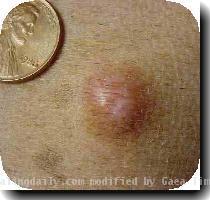Obama administration backs off ban on raw oysters from Gulf Coast amid fierce criticism
By Ben Evans, APFriday, November 13, 2009
FDA backs off oyster ban after strong criticism
WASHINGTON — Facing fierce resistance, the Obama administration on Friday backed off a plan to ban sales of raw oysters from the Gulf of Mexico during warm-weather months.
The Food and Drug Administration said it would put the proposal on hold while it studies ways to make the popular shellfish safer.
The abrupt turnaround came as oyster-lovers and industry officials — as well as Democrats and Republicans across the Gulf — blasted the plan as unnecessary government meddling. Industry officials said it could have killed a $500 million economy and thousands of jobs.
“They might have been tone-deaf in the beginning, but they got the tune pretty quickly and listened to what we had to say,” said Sen. Mary Landrieu, D-La., who said FDA Commissioner Margaret Hamburg notified her of the decision Friday afternoon. “I’m really thankful that they listened.”
About 15 people die each year in the United States from raw oysters infected with Vibrio vulnificus, which typically is found in warm coastal waters between April and October. Most of the deaths occur in people with weak immune systems caused by health problems like liver or kidney disease, cancer, diabetes, or AIDS.
While the total number of deaths is small compared with the annual estimates of 5,000 U.S. deaths from food-borne illnesses, FDA officials say it is a relatively high frequency that could be easily eliminated by processing oysters through treatments such as pasteurization.
Industry officials argue that anti-bacterial processing is too costly. They also say the treatments ruin the fresh taste and texture of raw oysters, which are considered a delicacy by many, particularly in the Gulf, which supplies about two-thirds of the U.S. oyster harvest.
Mike Voisin, an industry leader and oyster processor in Houma, La., said the FDA’s proposal had became “a focal point for people to vent” during a time of pent-up anxiety.
“Who can understand the bailout of Chrysler? Who could read a 1,000-plus page health care bill?” Voisin said. “This they could understand.”
Kevin Begos, the director of the Franklin County Oyster & Seafood Task Force in Apalachicola, Fla., said FDA was snowed under by complaints.
“We got 6,000 signatures on our petition in a week and on Facebook we had 7,000 members in one week,” Begos said. “We got broad support: restaurants, food lovers and support from people who don’t even like oysters who felt that consumers have a right to choose what food they want to eat.”
In a statement, FDA said it heard “legitimate concerns” and decided that further studies are necessary to explore the feasibility and costs of new processing requirements.
The White House declined to comment.
The oyster industry has been working with regulators for years to improve its safety performance by increasing refrigeration and trying to raise awareness of the hazards to people with weak immune systems.
But the FDA says the results haven’t changed much. The agency points to California as evidence that the ban is needed. In 2003, the state prohibited untreated Gulf oysters and has not seen any confirmed deaths since. By comparison, between 1991 and 2001, 40 people died in California from the infection.
The FDA proposal — which was announced last month and had been slated to go into effect in 2011 — would have prohibited sales of raw oysters from the Gulf for much of the year unless the shellfish were treated.
Associated Press writer Cain Burdeau in New Orleans contributed to this report.
Tags: Animals, Marine Animals, North America, United States, Washington

